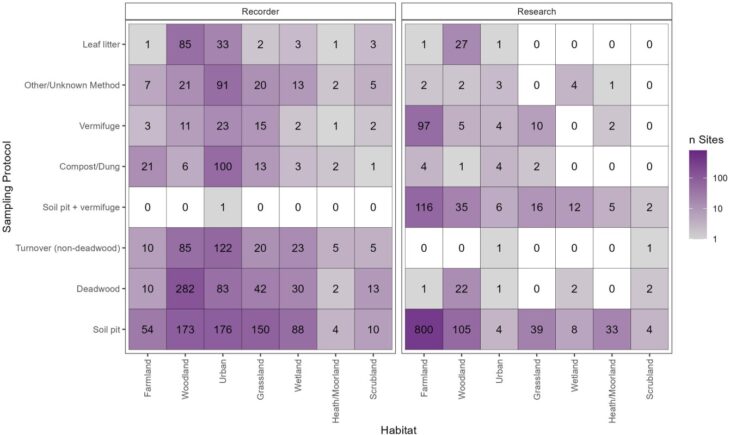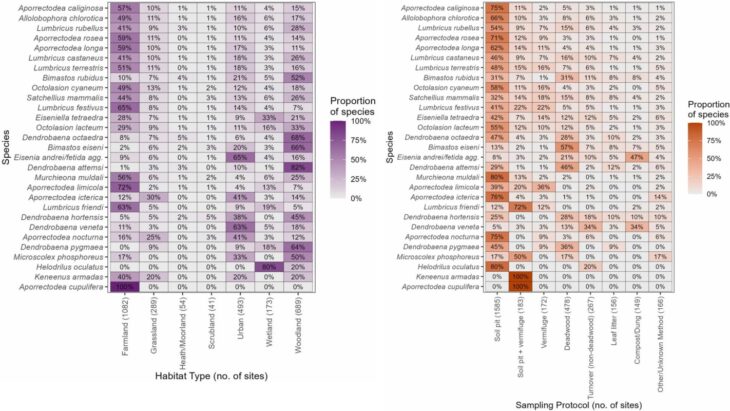The Earthworm Society launched the National Earthworm Recording Scheme (NERS) back in 2014 with the aim of addressing the lack of earthworm records available for the UK. This has included training and supporting volunteer earthworm recorders and working with research institutions to incorporate the data generated through research projects.
As of September 2022, the NERS database held 21,790 occurrence records for 30 earthworm species from 2683 sites – likely making it the largest national dataset on earthworm distribution of any country in the world. The Earthworm Society of Britain partnered with Forest Research and others to analyse this data to address the following aims:
- Update the current knowledge of British earthworm species occurrences.
- Identify species-specific habitat and microhabitat associations of British earthworms.
- Reveal any biases and complementarities between recorder and research earthworm collection.
- Inform how future earthworm sampling can be better focused to improve our knowledge of earthworm ecology in the British Isles.
The research has now been published in the European Journal of Soil Biology as an open-access article for anyone and everyone to enjoy and use. Highlights include:
- Researchers and public earthworm recorders tend to sample different habitat types.
- Most non-soil-based earthworm sampling is carried out by public recorders.
- Several British earthworm species demonstrate clear habitat-specificity.
- ‘Rare’ earthworm species were associated with under-sampled (micro)habitats.
- Future earthworm sampling should focus on uncommon habitats and microhabitats.


You can read the full article online.
You can see the National Earthworm Recording Scheme data on the NBN Atlas. The Earthworm Society of Britain was the winner of the John Sawyer NBN Open Data Award 2019. This award recognises and celebrates the outstanding contribution of NBN Data Partners in achieving the NBN Trust mission of “making data work for nature”.
